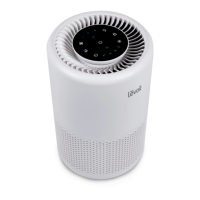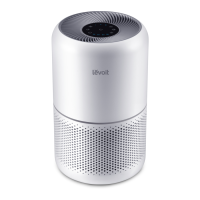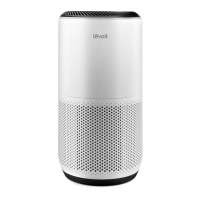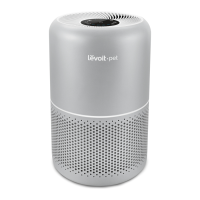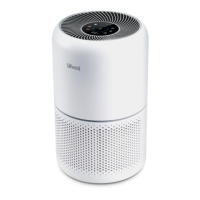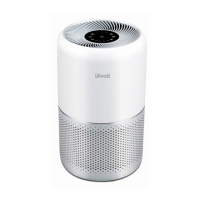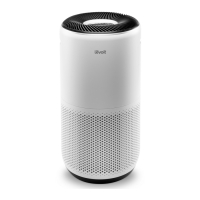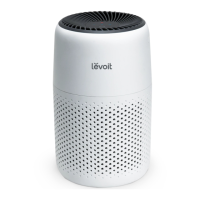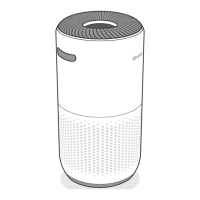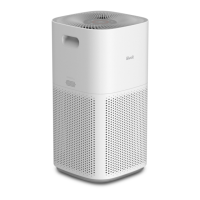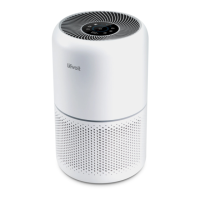10
The air change rate is how many times all of
the air in a room can be purified (or “changed”)
by the air purifier in 1 hour. Air changes per
hour are calculated on the recommended
room size assuming 2.4 m / 8 ft ceilings. For
smaller rooms, the air change per hour will
increase.
This air purifier can change air 2 times per
hour at the max speed in a single, closed room
up to 40 m² / 431 ft² in size. This is measured
at ACH 2. The air purifier is eective for larger
rooms, but air purification will take longer, with
fewer air changes per hour.
Clean Air Delivery Rate (CADR) measures
the eciency of an air purifier by indicating
the volume of clean air that an air purifier
produces per minute. This is based on
removal of dust, pollen, and smoke, which
are the 3 most common indoor air pollutants.
The higher the CADR, the more particles the
air purifier will remove and the larger the area
it can clean. The rating is measured at the air
purifier’s highest speed.
Air Change per Hour
Clean Air Delivery Rate
Note: To eectively clean air, keep windows
and doors closed while the air purifier is on.
ABOUT THE FILTER
The air purifier uses a 3-stage filtration
system to purify air.
A.
Pre-Filter
• Captures large particles such as dust,
lint, fibres, hair, and pet fur.
• Maximises the filter’s life by protecting it.
B.
H13 True HEPA Filter
• Traps at least 99.97% of airborne
particles 0.3 microns (µm) in size.
• Captures 99.99% of bacteria and 99.9%
of viruses.
• Filters small particles such as dust mites,
smoke particles, bacteria and viruses*,
and allergens such as pollen and pet
dander.
A
B
C
*The H13 True HEPA Filter can remove most
viruses and bacteria from the air, but cannot
fully remove them from your environment. Air
purifiers cannot prevent an infected person
from spreading an infection, and cannot
remove bacteria and viruses from surfaces.
Please use this air purifier together with other
precautions.
C. High-Eciency Activated Carbon Filter
• Physically adsorbs smoke, odours, and
fumes.
• Filters compounds such as
formaldehyde, benzene, ammonia,
hydrogen sulphide, and volatile
organic compounds (VOCs).
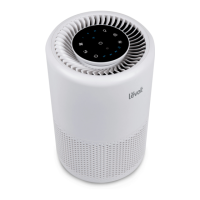
